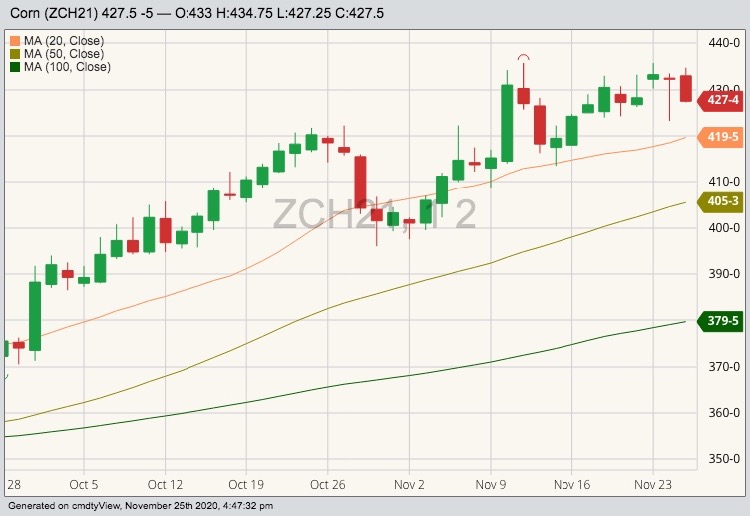MarketsFarm — Just ahead of the Thanksgiving holiday in the United States, the Chicago Board of Trade was pulling back a little, generating double-digit losses in most wheat contracts, while corn and soybeans were down by smaller amounts.
However, from Steve Georgy, president of Allendale Inc. at Fort McHenry, Ill., sits, the trend after Thanksgiving could push higher.
“You got rain on the Plains. You got moisture coming to areas that really need it,” Georgy said of wheat prices.
The latest crop progress report from the U.S. Department of Agriculture dropped crop conditions for wheat by three points, at 43 per cent good to excellent. A few wheat-producing states had ratings even lower, with Kansas at 29 per cent good to excellent, 24 for Texas and Colorado at only 17.
Read Also

USDA cuts US corn stocks outlook after raising exports to record high
The U.S. Department of Agriculture lowered its U.S. corn supply forecast in a monthly supply-and-demand report on Friday and raised its outlook for U.S. exports of the grain this season to a record high following a strong pace of overseas shipments.
“We had a big strong day [on Tuesday] and a big strong week,” Georgy added about wheat, citing light volumes and a short trading session on Friday which could also contribute to declines.
Corn, he said, was getting caught up in the declines in wheat, but improving ethanol production data was indicating a growing demand for corn.
Georgy wasn’t putting much credibility into reports that China was cancelling its soybean purchases for December and January.
“It’s more to get things excited right now. Overall, South American weather is the bigger story,” he stressed, suggesting that if reports prove true about China, that would likely cancel only a handful of sales.
With dry conditions persisting in some soybean growing areas in Argentina and Brazil, the thing to watch for is the dryness continuing by mid-December and going into early January, according to Georgy.
Brazil has long been forecast to produce a record soybean crop of well in excess of 130 million tonnes, while Argentina was projected to reap upward of 50 million tonnes.
“Are we then talking about yield loss or not?” he said, as losses in South America would be supportive of North American prices.
— Glen Hallick reports for MarketsFarm from Winnipeg.



















